Southwest Michigan field crops update – July 1, 2021
Bust to boom…to bust? How rainfall in the last half of June has alleviated the drought situation in southern Michigan and what possible concerns the recent wet weather could bring to crop production.

Weather
Temperatures in the latter half of June have been near normal, and we are holding steady at roughly one week ahead of normal with respect to growing degree days (GDD) base 50. The next week will see normal to above-normal temps with an additional predicted 157 GDD50, and the weekly crop water use will be a little over 0.2 inch per day. Mid-range forecasts for the first half of July predict warmer-than-normal temperatures.
The incredible amount of rain that has fallen across southwest Michigan has turned the growing season’s challenges on a dime. According to Michigan State University Extension agricultural climatologist Jeff Andresen, we received the equivalent of two months’ worth of rainfall in less than two weeks, which is very rare. We have gone from long term water deficits in high precipitation areas to near normal to a slight surplus. Overall, that is a good thing for the ground water recharge and surface water levels.
With a few inches of rain beginning June 18, most of our region was elevated from D2 to D1 drought according to the June 24 release of the Drought Monitor. However, since then, we received at least as much rainfall for a total of 4-10 inches over the past two weeks with select “winners” receiving north of 10 inches. That has now brought us up to the D0 drought level for the entire region. For most producers, the impacts of the intense rainfall vary on a field-by-field basis.
Although some of that rain fell during intense downbursts, most of it was spread out and was able to infiltrate lighter soils just fine. Minimal ponding occurred in fields with lighter soils aside from isolated low spots or areas of compaction. However, fields with heavier soils, especially in areas that received the brunt of the storms, had significant amounts of standing water. There is little chance of additional rain until the middle of next week, but mid-range outlooks predict a slight chance of wetter than normal conditions in the first half of July.
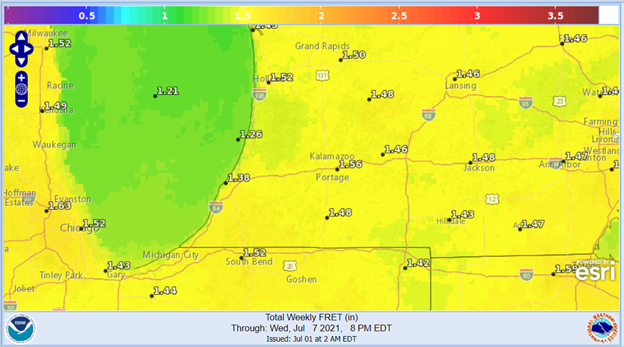

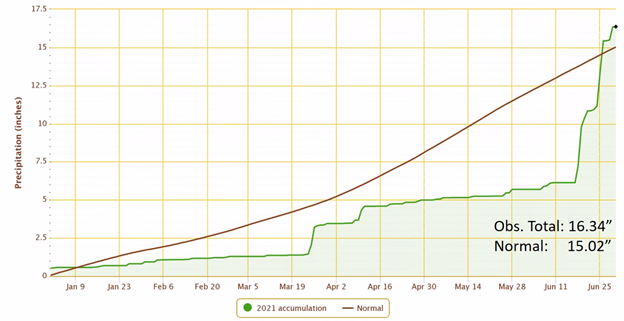
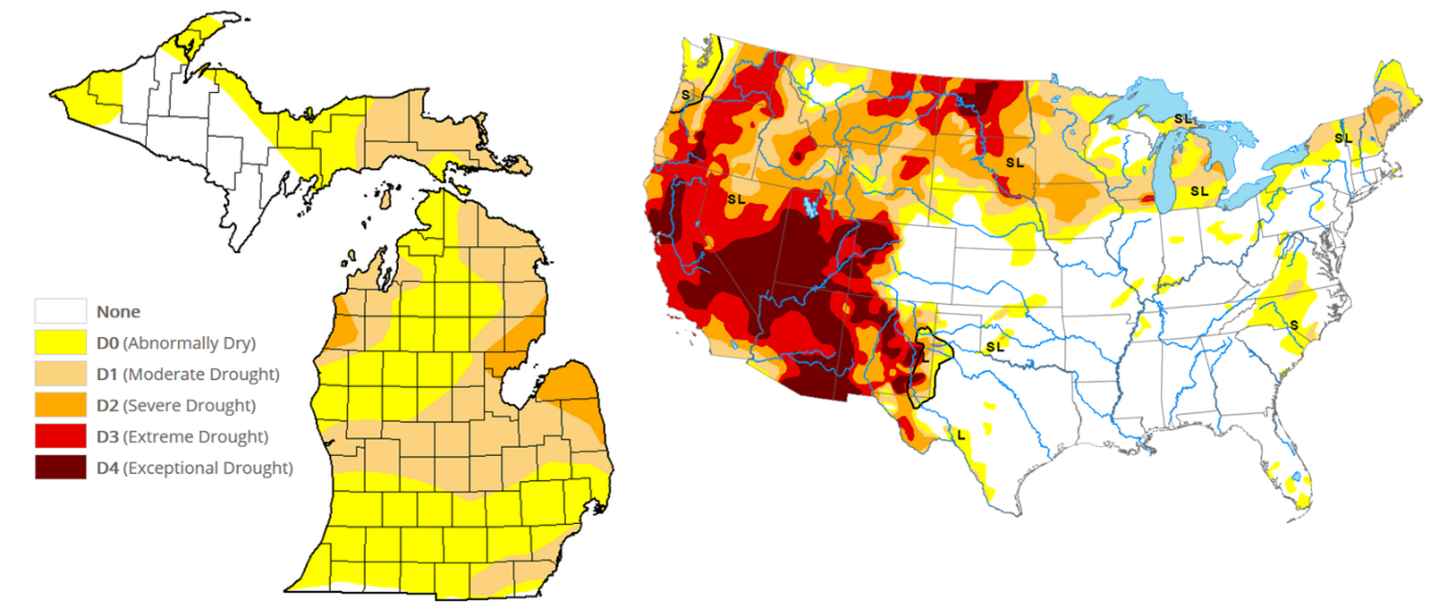
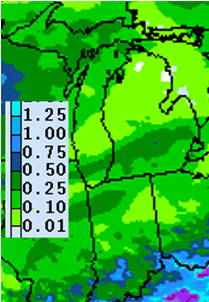

Crops and pests
Wheat and small grains
Wheat lodging (falling over) has been reported throughout the state and in our region following heavy rain and high winds nearly a couple of weeks ago. This was likely a result of variety selection as well as high yields. Several cereal rye patches that were being grown for seed have also lodged. MSU Extension wheat specialist Dennis Pennington says wheat harvest has begun in Michigan. Low falling numbers, an indication of grain sprouting while still on the head, has been reported in white wheat areas—see “What causes low, falling numbers in wheat?” for further explanation. Pennington recommends starting harvest early as sprouting goes up the longer the crop is in the field.
MSU Extension field crops pathologist Marty Chilvers reports that the recent rain and humidity is bringing on black “sooty” mold, which is a naturally occurring fungal species colonizing the heads as they senesce. Anything that prematurely killed the wheat including abiotic stress such as drought or diseases such as take-all and root rots will heighten this. Generally, this sooty mold should not be much of a problem and will blow out the combine during harvest. However, we might see some black point on the grain, caused by some of these fungal species, which shows as a black discoloration typically on one end of the grain. Although black point will not reduce yield, it can affect quality. This will depend on wheat growth stage at time of infection and ‘disease’ pressure.
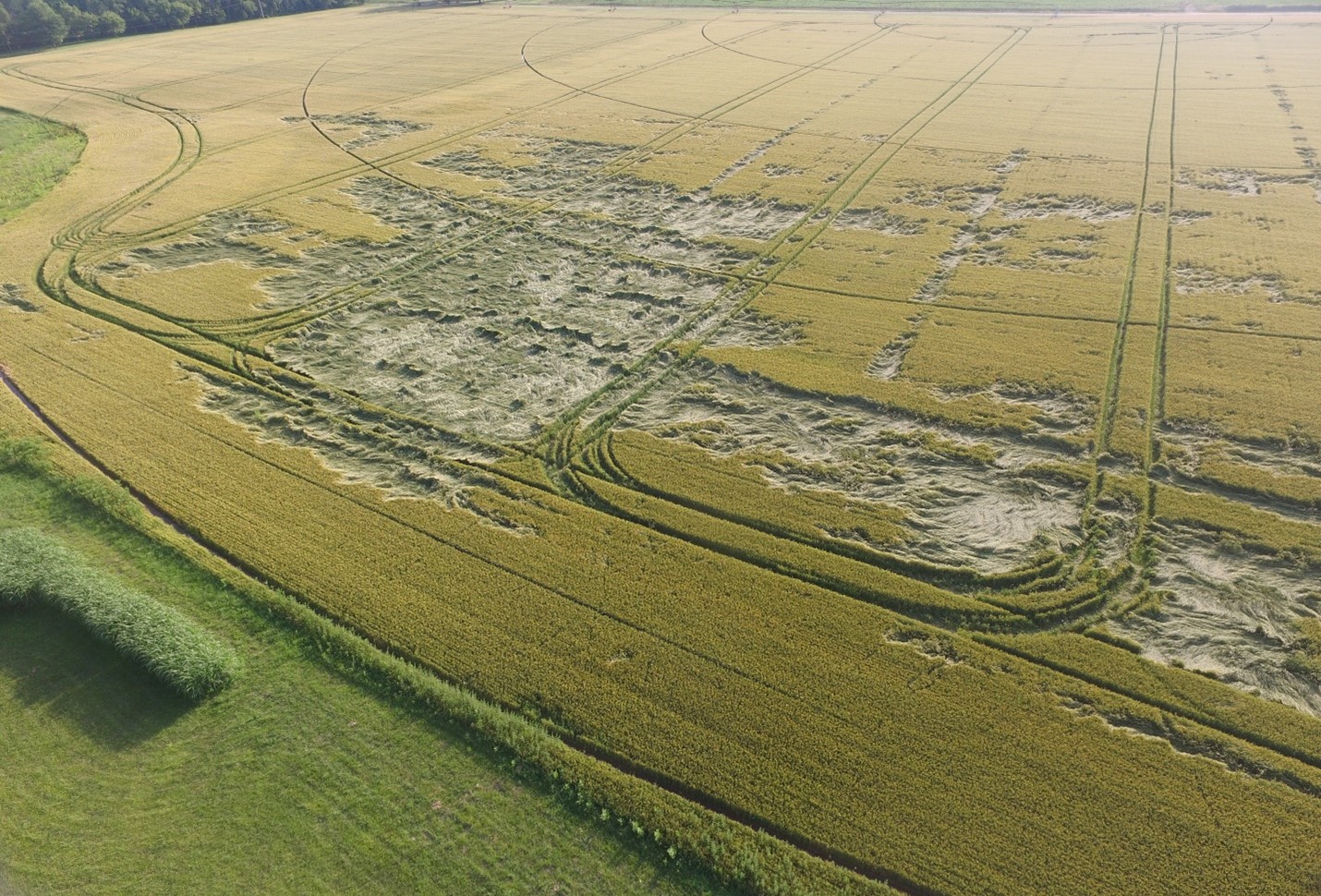
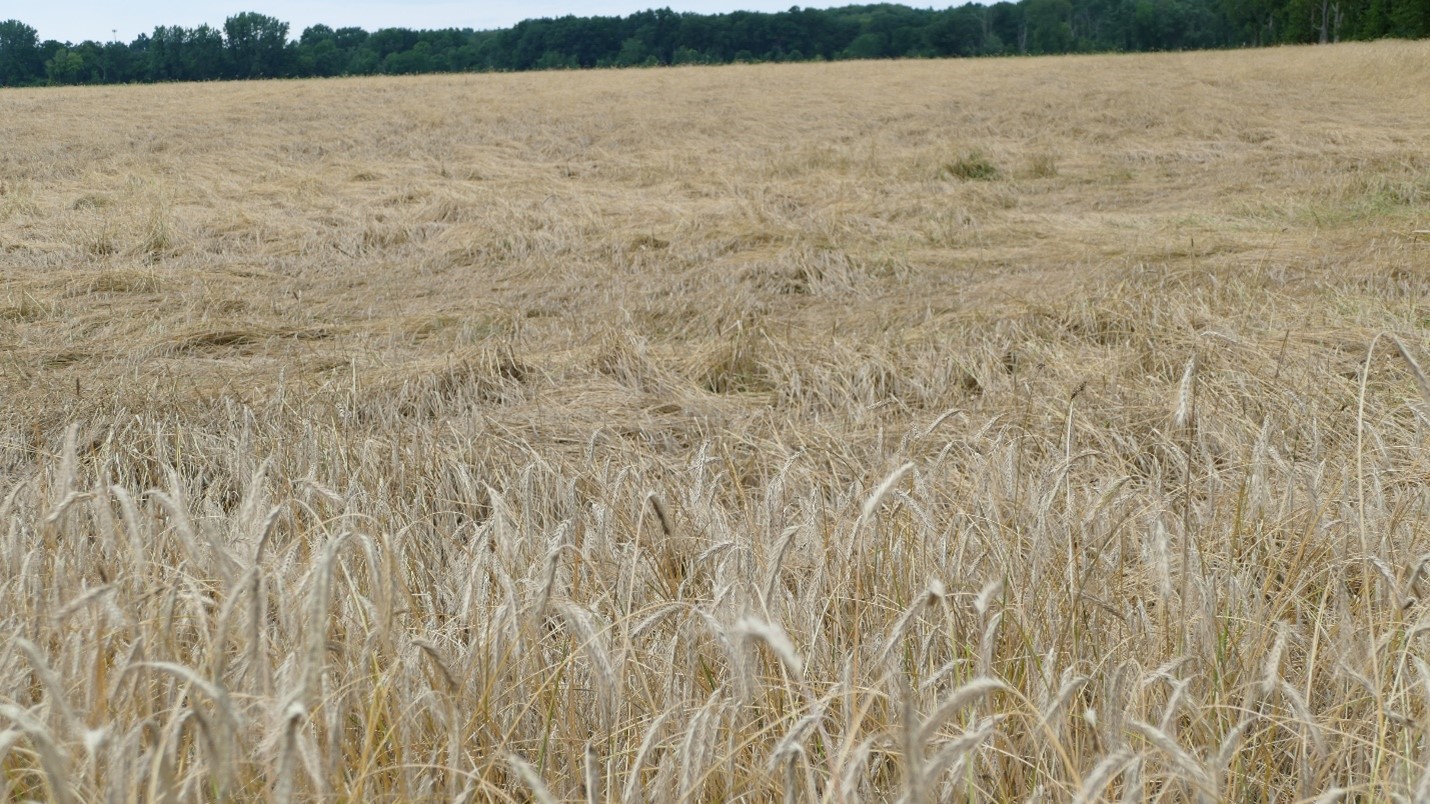
Corn and soybean
The rainfall has alleviated the drought stress conditions that had prevailed across the region for most of the growing season. Corn and soybeans have responded very well to the rain, and with the warm weather, crop progress is advancing rapidly. Most corn is anywhere from V6-V10 and early-planted soybean have begun flowering (R1), marking the deadline for applying certain herbicides and the starting point for protecting flowers from infection.
We do have areas that have been impacted by damage from repeated flooding, especially on heavier textured soils. How much damage seen is highly dependent on the topography of the field, drainage, soil type and to a certain extent planting date. The later planted fields of corn seem to have the worst damage from standing water, but there are challenges on the earlier planted corn as well. For those fields with standing water, plant survival may be an issue. Corn and soybean can typically survive one to four days under water, although with warm temperatures like we have seen, we are at the low end of that range.
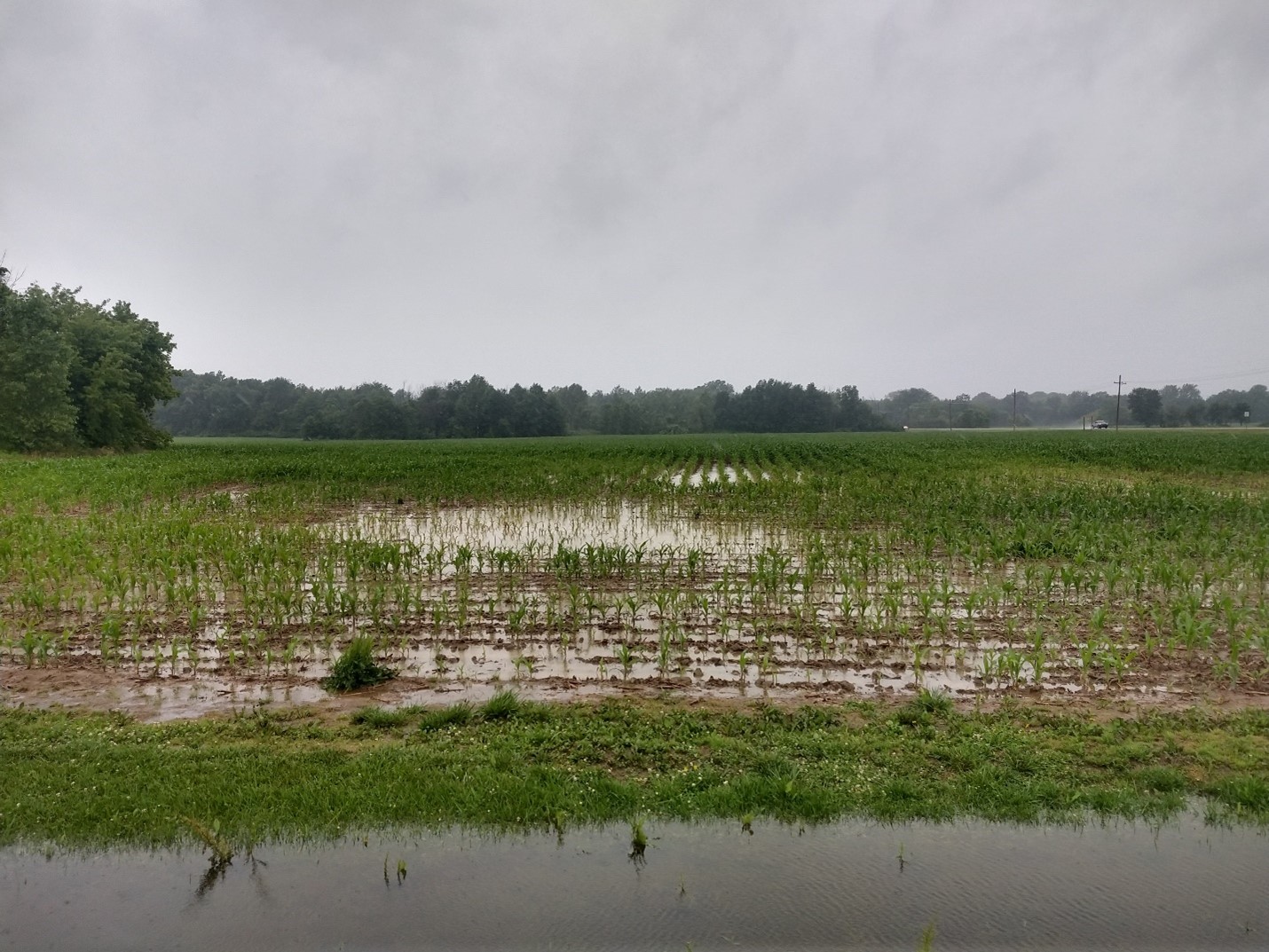

Another concern is the loss of nitrogen from the root zone for some of the hardest hit areas. Repeated soil saturation and standing water most likely has resulted in N losses due to denitrification, where applied N fertilizer is utilized by microbes in the soil and released as N2 or NO2 gas. On lighter soils, repeated saturation events moving down through the soil profile can carry nitrates below the root zone and make the N unavailable to the plants.
These situations can vary widely within fields as well as between fields, so monitoring plant color, health status and extent of stand and yield potential loss are important considerations in deciding if supplemental N applications are required. This article from MSU and Purdue was written during a similar situation in 2013 and outlined important considerations for adding additional N following heavy rainfall during the growing season.
Diseases
Another issue with the two weeks of wet weather is diseases. With that much rain and high humidity, diseases such as northern corn leaf blight, gray leaf spot and tar spot in corn and white mold in soybean are favored under these conditions. Chilvers says tar spot was detected in northern Illinois this week at extremely low levels but has not been identified yet in Michigan. Andresen said many areas that received high rainfall amounts experienced extended periods of continuous leaf wetness, sometimes as much as five days, which can set the stage for disease progression. Moisture levels in July and August will dictate how diseases progress.
Fungicide applications for white mold should be considered now as early-planted soybean is beginning R1. Endura and Approach are both effective against white mold according to Chilvers. For tar spot, best management practices continue to include an application of an effective fungicide such as Trivapro, Headline Amp, etc. at VT/R1 to possibly as late as R4.
Insects
As we get closer to corn tasseling, it is time to think about western bean cutworm. Multiple traps have been set throughout Michigan including several in St. Joseph, Kalamazoo and Branch counties, and we will track progression and report peak flight in future editions of this regional report.
Weeds
Many farmers waited to apply postemergence herbicides, and now that weeds are growing rapidly, control will be more difficult once fields dry out since bigger weeds are harder to kill than smaller ones. With limited trafficability of fields in some areas, we are seeing challenges for providing timely weed control.
Be sure to check out the maximum crop growth stage and weed heights when selecting herbicide programs to get the best control possible in your delayed herbicide application fields. While the 2021 Weed Control Guide for Field and Forage Crops is available to purchase from the MSU bookstore, the 2020 Weed Control Guide is available online. Refer to Tables 1H (Weed and crop heights for postemergence herbicide applications in corn) and 2H (Maximum broadleaf weed heights for postemergence control in soybean) for more guidance on controlling larger weeds in fields.
For those who planted Enlist soybean, both Enlist (2,4-D choline) and Enlist Duo (2,4-D choline + glyphosate) can be sprayed up through R2. For those who planted RR2 Extend soybean, remember that the window for spraying the approved dicamba products ended on June 30. Liberty can be applied up to R1 in LibertyLink soybean at 32-43 oz/ac, assuming soybean has the LibertyLink trait.
Volunteer corn is also getting tall in soybean fields, and even though we have herbicides that selectively control grasses in soybean, some may have issues with complete control. Clethodim products (SelectMax, others) are the best bet for volunteer corn. Remember that Enlist corn is tolerant of “fop” grass herbicides (quizalofop, fluazifop, etc.) so these will not be effective against Enlist volunteer corn.
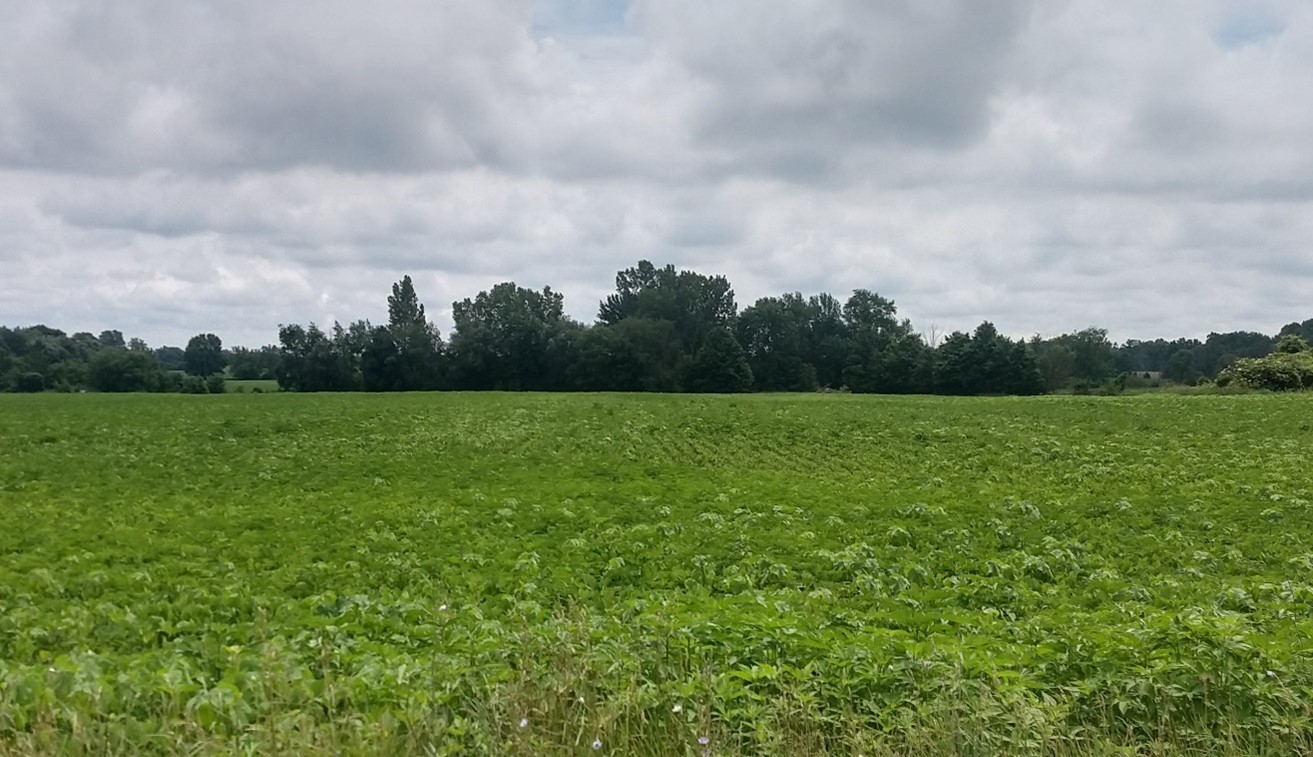
Cover crops
In this week’s MSU Extension Field Crops Virtual Breakfast, sustainable agriculture educator Dean Baas discussed considerations for planting cover crops following wheat harvest. Baas talked about the pros and cons of multi-species vs single-species cover crop plantings. Benefits of a multi-species mix include more possible ecosystem services, greater potential for stable performance year to year, and a greater level of “insurance” of cover crop success under different soil and weather conditions. Challenges include higher cost, difficulty in seeding (particularly with different seed sizes and optimum seeding depths, soil moisture levels, and timings), and potential difficulty in terminating.
Baas reviewed scientific research showing that single-species cover crops almost always produce equal or greater amounts of biomass compared with multi-species mixes. If choosing a multi-species mix, the MSU Extension cover crops team recommends choosing one species from each functional group (grasses, legumes and brassicas) and, if more are desired, consider differences within functional groups such as summer, winter, and cool-season annuals. Consult the Midwest Cover Crop Council’s Selector Tool when deciding which species to use for your specific location and cover crop goals.



 Print
Print Email
Email